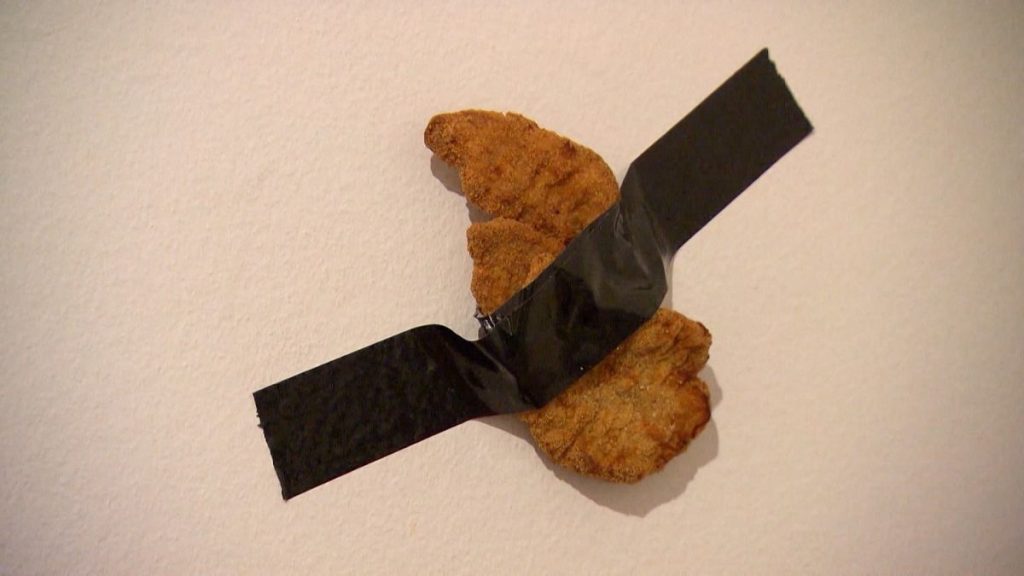The exhibition curated by the anonymous street artist known as Tabby presents a unique artistic exploration centered around the theme of schnitzels. Situated in a minimalist venue on Spiegelgasse, this showcase features an intriguing array of schnitzels that vary in size, thickness, and even maturity. By placing these diverse representations side by side, Tabby invites viewers to engage in comparative analysis, thus prompting discussions about aesthetics, identity, and the mundane objects that make up our culinary culture.
In addition to the schnitzel comparisons, the exhibition boasts a significant selection of Tabby’s global street art, with 100 pieces displayed throughout the venue. This incorporation of street art not only enhances the overall experience but also bridges the gap between traditional culinary culture and contemporary artistic expression. By juxtaposing the schnitzels with these street art pieces, Tabby underscores the artistry inherent in everyday life and elevates the conversation surrounding food as an art form.
Unlike Maurizio Cattelan’s notorious installation of a banana taped to a wall, which drew widespread media attention and sparked debates about the value of art, Tabby’s schnitzels are decidedly not for sale. This choice reinforces the notion that the exhibition is more about appreciation and reflection rather than commercial gain. Visitors are encouraged to engage with the artworks in a relaxed setting, with the opportunity to view this quirky showcase by appointment and free of charge, fostering a sense of community and inclusivity.
Tabby’s decision to feature schnitzels, a well-known dish with cultural significance, allows for a playful yet thought-provoking exploration of the intersection between food and art. By drawing attention to such a familiar item, the artist challenges viewers to reconsider their perceptions of both food and art, pushing the boundaries of what is considered worthy of artistic representation. This blend of humor and introspection invites participants to reminisce about their relationships with food and the culinary traditions that shape their identities.
Moreover, this exhibition serves as a reflection of contemporary artistic practices, where boundaries between high and low art continue to blur. In an age dominated by consumer culture and the commodification of art, Tabby’s work positions itself as a critique of these trends. By choosing schnitzels—ordinary yet beloved culinary items—Tabby elevates them to the level of fine art, creating a dialogue around value and meaning in a world where everyday objects can often be overlooked.
In conclusion, Tabby’s exhibition on schnitzels combines humor with a serious inquiry into the nature of art, food, and cultural significance. The thoughtful curation and installation not only provide a platform for artistic expression but also encourage spectators to engage deeply with both the artworks and their own perceptions of culinary traditions. This innovative approach reflects the evolving nature of contemporary art and its capacity to provoke thought and discussion in unexpected ways, highlighting the power of creativity in everyday life.














